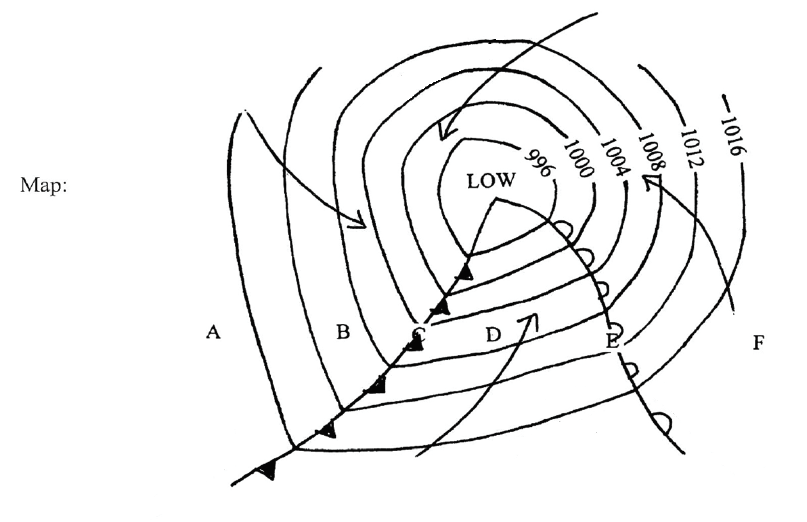Meeting current and future basic resource needs without compromising the ability of future generations to meet their basic needs is considered a(n)
A. natural income.
B. trade-offs.
C. scientific solutions.
D. environmentally sustainable society.
E. natural capital degradation.
Answer: D
You might also like to view...
On the cross-section diagram, label the following:
The question is based on this hypothetical weather map in the Northern Hemisphere showing isobars and the positions of a cold front and a warm front (top of map is north). Six locations are marked on the map (points A, B, C, D, E, and F). A cross-section diagram along points A, B, C, D, E, and F is shown below the map.


(a) Cold front
(b) Warm front
(c) Cold air mass(es)
(d) Warm air mass
(e) Direction of cold front movement (use arrow)
(f) Direction of warm front movement (use arrow)
Identify and describe the three principal sources of water pollution
What will be an ideal response?
Bisphenol A (BPA), a common component of plastics in bottles and can liners
A) mimics estrogen and can potentially cause disruption of human reproduction and development. B) causes mutations similar to those caused by UV light and X-rays. C) has been tested by the European Commission and found safe for human consumption. D) has been withdrawn from manufacture and use in the United States.
since the two populations of squirrels cannot ______________, adaptations favored in one population are not shared with the other population's __________________________.
a. selective forces b. more c. allopatric speciation d. microevolutionary events e. communicate f. interbreed g. less h. gene pool i. symmetric speciation j. macroevolutionary events